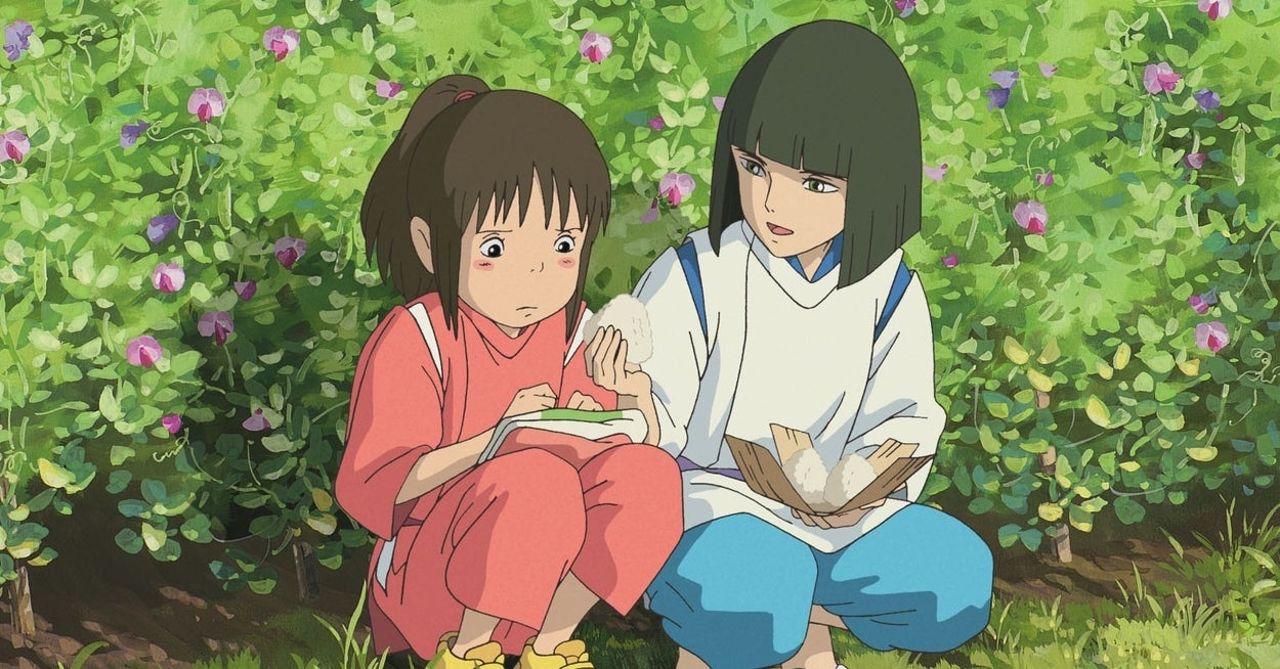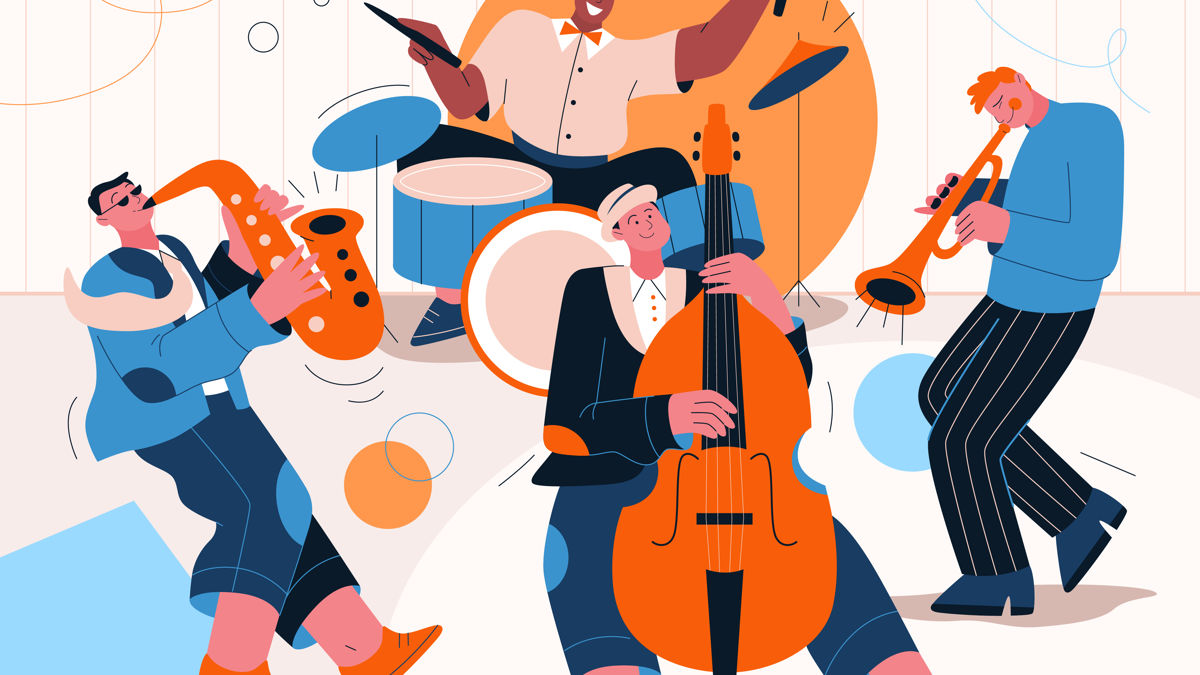What's the score? Composing for animation
From Studio Ghibli to Disney, Joe Worters, award-winning composer at Blind Pig and Absolute, explains how the use of music differs greatly between live-action and animated pieces of work.
Waking up at an ungodly hour, sneaking downstairs and watching cartoons was my idea of a perfect Saturday morning.
Captain Planet, Ren & Stimpy, X-Men, Animaniacs and nearly every other staple of early ‘90s animation were masterpieces in my eight-year-old eyes. And yet, I can’t remember what happened in any of them.
The soaring guitars of the X-Men theme; the ‘80s rock anthem of Teenage Mutant Ninja Turtles... every single one of them was a banger.
What has lodged firmly in my head are the theme tunes. The soaring guitars of the X-Men theme; Sharky and George’s riff on Peggy Lee’s Fever; the ‘80s rock anthem of Teenage Mutant Ninja Turtles... every single one of them was a banger. Ask anyone in their 30s and I bet they won’t be able to tell you the plot to a single episode of DuckTales or ThunderCats. Ask them to sing the title song, and you’ll be hard pushed to get them to stop.
Above: The opening theme song to Disney's DuckTales.
Over 25 years later and my childhood musical diet of Disney, Warner Brothers and Nickelodeon has developed into a full-time career. I now write music for both live-action and animation and, whilst there are definitely some huge similarities to each format, there are also some key differences.
Slight nuances are far harder to express through animation.
In shot footage you can, hopefully, rely on the actors to convey subtle emotions. Every micro-expression, breath and small movement can completely change the meaning of a scene. These slight nuances are far harder to express through animation. Take the endings of two very different films that really shouldn’t be compared - the Coen Brothers’ No Country for Old Men and Pixar’s Monsters, Inc.
In the final scene of the former, the audience watches as Ed Tom comes to terms with his place in the world while his subconscious tells him that death is the next milestone. All of this plays out with no score, just a faint ‘tik tock’ as a metaphor for borrowed time, and Tommy Lee Jones looking out of the window with existential acceptance. And that’s all we need.
Above: Tommy Lee Jones stars in the subtle, music-free end to No Country For Old Men.
On the other hand, during the ending of Monsters, Inc., Mike gives Sully the opportunity to see Boo again. If you watch the scene without the music, you may get a loose sense of how Sully feels, but essentially you’re left with a static monster staring at a clipboard. Put the music back, and you understand the scene. As Sully drops his eyes to the drawing by Boo, the full score melts away to delicate piano, flute and violins, intensifying Sully’s feelings of regret and loss.
Above: The score plays a big part in the ending to Pixar's Monsters, Inc.
In advertising, the first few seconds are imperative in grabbing the viewer’s attention. Animated campaigns trust in the marriage of eye-catching graphics and music to do so, but how does this translate when composing for live-action? What’s the difference?
Animated campaigns trust in the marriage of eye-catching graphics and music.
Often, shot footage relies more heavily on the music to set the tone, particularly when dealing with sensitive material. It must grab the viewer by the ears and draw them in. This was the challenge I faced when writing the music for the anti-knife crime campaign, No More Knives LDN. In the opening four seconds, the viewer is shown a brutal fact. This is accompanied by a dirty bass synth score, which continues – without dialogue – for the next 16 seconds.
The scene is set, the intrigue is there, picture and music reach the crescendo of the piece in perfect harmony. The pace, the cinematography, the voiceover, the cast, the SFX, the music – everything has to mesh for the piece to work together and it’s a total collaboration. One which must seamlessly work, whilst not overpowering the important message at the core of the project.
Credits
powered by
- Agency In-House
- Production Company In-House at Agency
- Director Will & Carly
-
-
Unlock full credits and more with a Source + shots membership.
Credits
powered by
- Agency In-House
- Production Company In-House at Agency
- Director Will & Carly

Credits
powered by
- Agency In-House
- Production Company In-House at Agency
- Director Will & Carly
Above: Worters' worked on the No More Knives LDN film.
The use of music to add meaning to picture is especially true in Japanese anime. Somewhere around the halfway point in Studio Ghibli’s Spirited Away we find Haku telling protagonist Chihiro to recall which pigs her ill-fated parents have been turned into, or they will remain as pigs forever. The scene lasts about two minutes and we only see four expressions from the characters in that time. Enter: Joe Hisaishi’s score, which does an incredible job in moulding the scene into a delicate moment, steering it away from soapy overacting, and Chihiro’s sobs are now heart-breaking. Studio Ghibli’s illustration doesn’t show the idiosyncrasies of human movement, it’s flawless and nearly in danger of falling into the uncanny valley. The music pulls it back and adds the humanity.

Above: Joe Hisaishi’s score for Studio Ghibli’s Spirited Away is an integral part of the film.
You can’t talk about music and animation without mentioning the mouse in the room. Disney is considered to have made the first fully synced sound animation with Steamboat Willie. For the uninitiated, Steamboat Willie tells the story of Minnie Mouse getting her guitar and sheet music eaten by a goat. Mickey seeks to calm her down by performing progressively weirder forms of animal cruelty, all to the tune of Turkey in the Straw. Animation synced to music was born.
As we're exposed to more musical styles, cinema-goers’ palettes have become a little more refined.
Due to the recording limitations of the time, reproducing real-world sound was not feasible. Animation studios either made complex sound effect machines or hired orchestras to simulate the sounds occurring onscreen. This Mickey Mousing technique was in use for decades until recording techniques were improved and it’s largely out of favour now (it’s seen as juvenile and simplistic). As we're exposed to more musical styles, cinema-goers’ palettes have become a little more refined. But back in the dawn of animated film, there was no better way to add weight and heft to a character's personality than a bass drum and Oom-pah brass brand.
Above: Steamboat Willie is considered to be the first animation with fully synced sound.
Music is an integral part of motion pictures. Whether it’s live-action or animation, music communicates something that can’t be achieved with the stroke of the brush or an expressive human face alone. Your heart will break a little harder, your terror will be heightened, and the resolution will be all the sweeter if the music just works.
When done correctly, music breathes life into a cartoon monster as it stares at a crayon picture.
For me, animation needs a stronger tether to the human experience. Where live-action has the luxury of a human performance, animation needs music to flesh out the imaginary world. When done correctly, music breathes life into a cartoon monster as it stares at a crayon picture drawn by a child they once knew. And then you cry.
)




 + membership
+ membership







